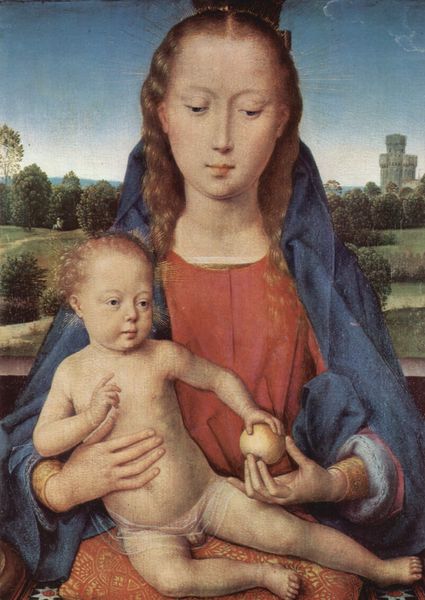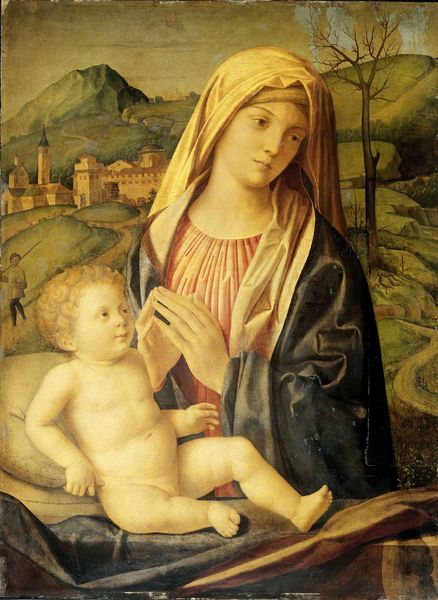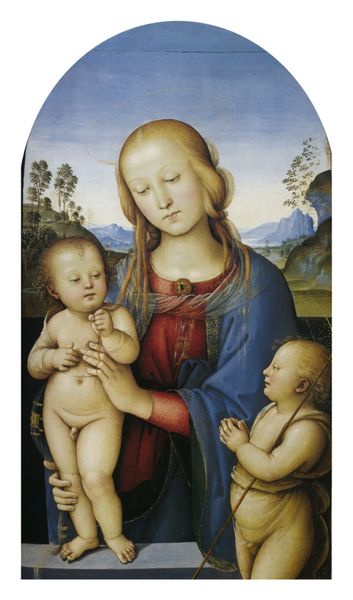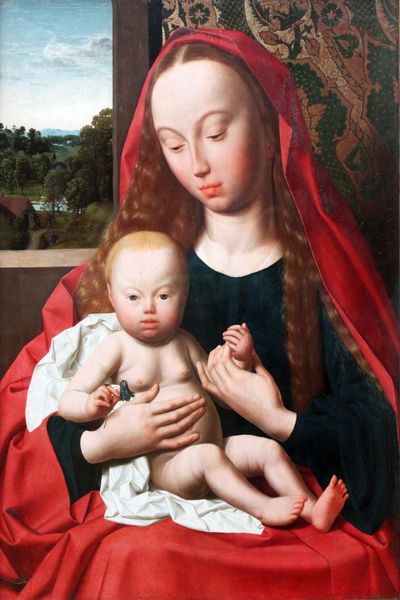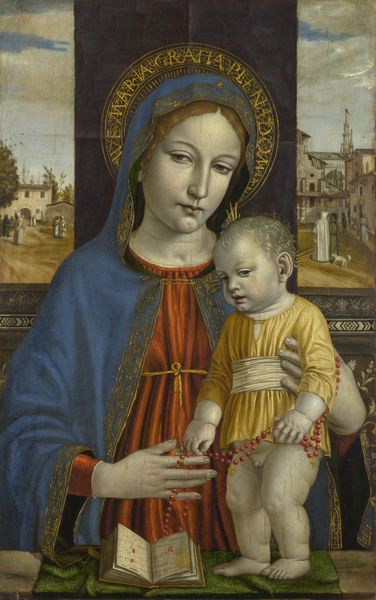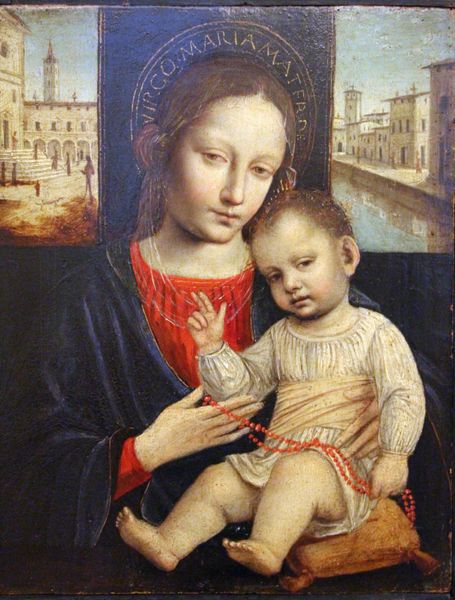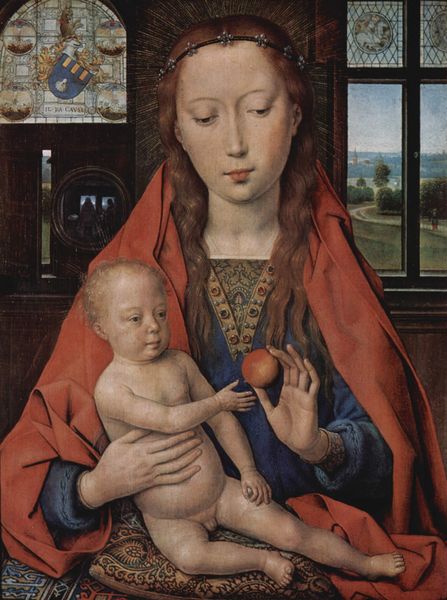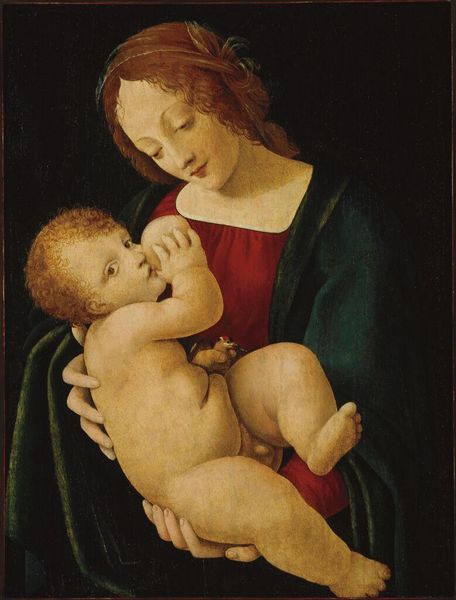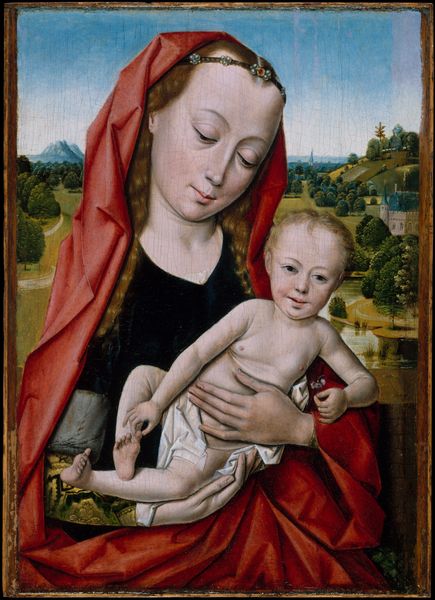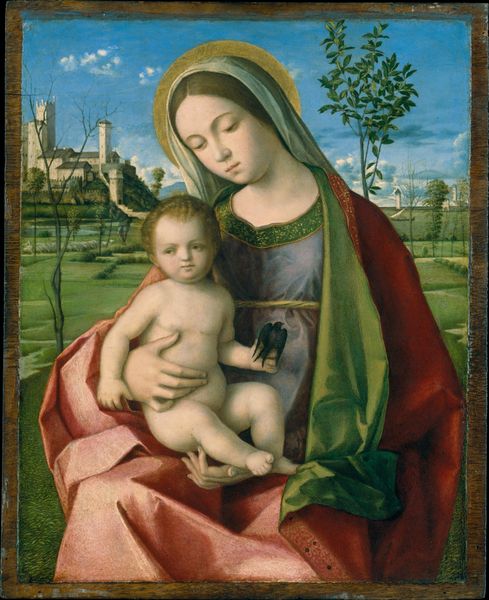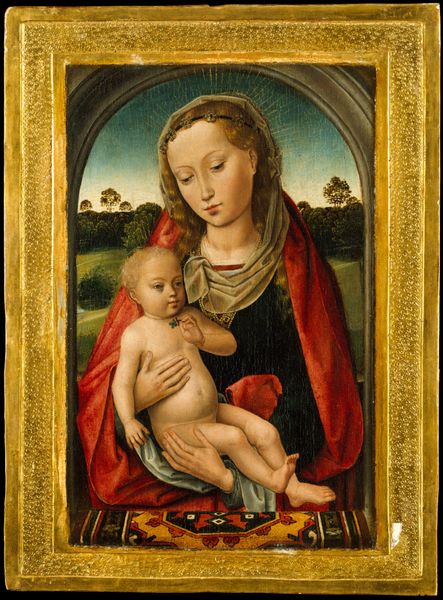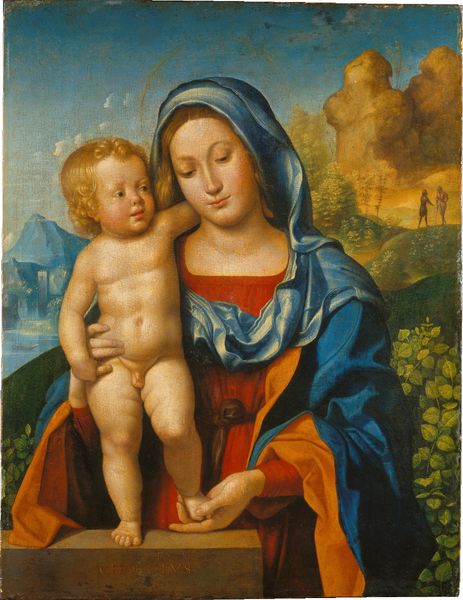
painting, oil-paint
#
portrait
#
painting
#
oil-paint
#
figuration
#
oil painting
#
italian-renaissance
Copyright: Public domain
Curator: Andrea del Verrocchio’s oil painting, "Madonna and Child," stands before us, a compelling example of Italian Renaissance portraiture. What are your initial impressions? Editor: Hmm, first thought? That kid looks like he’s about to drop those cherries. There's almost a playful, momentary quality amidst the formality, wouldn't you say? And the colors—the cool blue against that warm red—they vibrate! Curator: That perceived vibration points to a tension embedded in Renaissance depictions of the Madonna. The representation of Mary, the archetypal mother, is so frequently staged within specific social, political, and religious constructs of female identity. Editor: Ah, yes, the Madonna as symbol, a role... but what about the woman? Still, Verrocchio is really getting after something in their faces, isn't he? Like a story beyond the religious one that feels intensely personal and so open to imagination. Curator: I see your point. Considering this from a feminist perspective, the subtle downward gaze of the Madonna speaks volumes about prescribed feminine behaviors of modesty. Yet, you are right. Her gentle look is really tender and natural, beyond any pretense. The Italian Renaissance was undergoing intense transformation, and his ability to infuse natural emotion speaks to new understandings of not only women but familial relationship and social order. Editor: Absolutely! And then there are those tiny cherries. Symbols of paradise, maybe, or perhaps something else entirely? That almost accidental touch of sensuality is really charming and humanizing, it takes it all down a notch. But it brings up questions about humanity in relation to higher spiritualism... What do you see looking at the broader scope? Curator: Zooming out a bit, that inclusion asks about not only spirituality, but, the access points and implications of innocence and its loss, which are so important to religious rhetoric then, and in many ways, still today. This all opens us to more deeply examine identity through those intersections of class, power, gender, and race during this moment and perhaps in a continuing reflection into the present moment. Editor: Right, seeing all that opens this image even further. Looking at this makes me excited about the perspectives of all these conversations we have left to have. It is like art's secret power. Curator: Indeed. By bringing together the personal with the socio-political, we are invited to reflect critically on our own world and our individual and collective positionality within it.
Comments
No comments
Be the first to comment and join the conversation on the ultimate creative platform.
